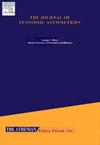地方财政困境与财政制度:来自意大利的证据
Q1 Economics, Econometrics and Finance
引用次数: 0
摘要
本文研究了财政监管如何通过向地方决策者下放更多责任来影响下级政府的财政,从而限制搭便车行为并确保财政可持续性。在这种情况下,意大利的案例提供了一个合适的监管环境,从 1989 年到 2018 年,近 600 个意大利市政当局经历了财政困难,多年来不断演变。本研究的目的有两个:i) 调查地方政府破产程序的历史和地理演变;ii) 检验意大利关于地方政府违约的外生立法是否影响了地方财政困境现象的动态发展,确定三种不同的财政监管制度。我们的研究结果表明,2000 年之前的监管制度为政府救助地方违约企业做好了准备,鼓励市政当局利用破产程序,而 2001 年之后,随着立法干预措施的更新,这种激励作用不再存在。如果按人口规模对各市进行分析,就会发现不对称效应,这说明在财政政策方面不能采取一刀切的做法。本文章由计算机程序翻译,如有差异,请以英文原文为准。
Local financial distress and fiscal regimes: Evidence from Italy
This paper investigates how fiscal regulation may influence lower government finances by devolving greater responsibilities to local policymakers that limit free-riding behaviour and ensure fiscal sustainability. To this extent, the Italian case provides a suitable regulatory setting that has evolved over the years, as almost 600 Italian municipalities experienced financial distress from 1989 to 2018. The aim of this study is two-fold: i) to investigate the historical and geographical evolution of local government bankruptcy procedures and ii) to test whether the exogenous Italian legislation on local government defaults influenced the dynamics of the local financial distress phenomenon, identifying three different fiscal regulatory regimes. Our results show that the regulatory regimes until 2000, which prepared for the government bail-out of local defaults, encouraged municipalities to take advantage of the bankruptcy procedures and after 2001, when the legislative interventions had been updated, there is no longer such incentive. Asymmetric effects are observed when municipalities are analysed by population size, pointing to the need to go beyond a one-size-fits-all approach to fiscal policy.
求助全文
通过发布文献求助,成功后即可免费获取论文全文。
去求助
来源期刊

Journal of Economic Asymmetries
Economics, Econometrics and Finance-Economics, Econometrics and Finance (all)
CiteScore
4.80
自引率
0.00%
发文量
42
审稿时长
50 days
 求助内容:
求助内容: 应助结果提醒方式:
应助结果提醒方式:


